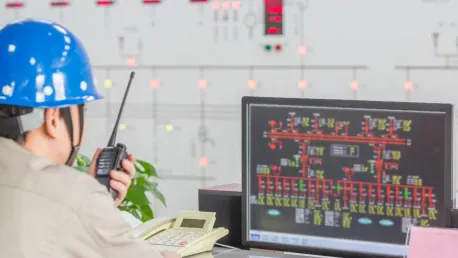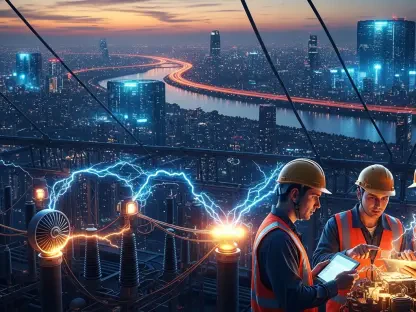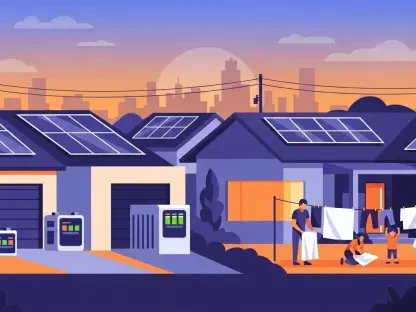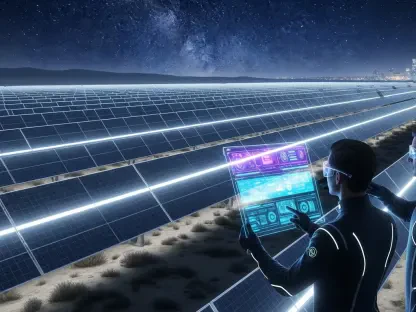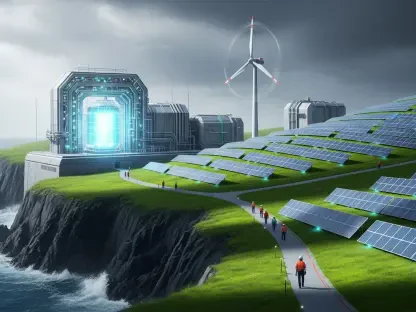The new European Commission, led by Ursula von der Leyen, has set its sights on advancing the electrification of the EU economy, with an ambitious plan to modernize energy infrastructure and reduce energy costs. This electrification is seen as essential for achieving the EU’s ambitious climate goals and maintaining economic competitiveness in the global arena. However, with the EU’s electrification rate having stagnated for years, the new Commission faces significant challenges in its efforts.
At the outset of her term, Ursula von der Leyen unveiled a new plan to modernize the EU’s supergrid, aiming to lower energy prices through improved infrastructure. The details of this plan are set to be released by the end of February. This initiative raises numerous questions about whether the second von der Leyen Cabinet can spark the long-awaited breakthrough in electrification and whether this electrification plan can truly bolster the Commission’s broader economic competitiveness agenda.
The Electrification Alliance’s Call to Action
A coalition known as the Electrification Alliance has been championing the cause of rapid grid expansion and has been urging the Commission to adopt a rigorous Electrification Plan within the first 100 days of its tenure. This alliance, which includes ten business associations, emphasizes the necessity for swift action to meet the electrification goals. The movements have gained traction, drawing attention from various environmental NGOs, which are equally vested in the electrification agenda.
This heightened focus on electrified energy systems isn’t a coincidence. Recent technical evaluations of the European Commission’s decarbonization roadmaps indicate a need to boost electricity’s share in final energy consumption from 33% to 54%. Essential technological enhancements of the grids are necessary to manage the variable inflow of wind and solar power, which already constitutes nearly half of the EU’s electricity generation. Improved transborder transmission connections would also bolster market integration and lead to regional price harmonization.
Addressing Stagnation and Implementation Challenges
Despite the growing interest, there remain significant hurdles. The share of electricity in the EU’s final energy consumption has stalled at 23% for the past two decades, requiring targeted policy intervention to change this. Infrastructure projects endorsed for European support within the 10-year network development plans show sluggish implementation rates. Furthermore, funding for grid modernization and increased electrification is fragmented across various programs. The pressing need for substantial investments—estimated to be 584 billion euros by the end of this decade—further highlights the urgency of these initiatives.
The Electrification Alliance has put forward several strategies to overcome these challenges. One key proposal is the establishment of mandatory electrification indicators within National Climate and Energy Plans. The alliance has suggested targets of increasing the electrification rate from 23% to 35% by 2030, 50% by 2040, and 71% by 2050. Simplifying permitting processes and revising regulations for electricity network planning are also recommended to speed up the implementation of viable projects. According to the International Energy Agency, many wind and solar power projects are in limbo, waiting for grid connections—accounting for five times the capacity installed in 2022.
Collaboration and Funding Priorities
Moreover, the proposal of establishing the Industrial Electrification Alliance aims to facilitate collaboration between EU policymakers and private sector entities. This would enable the sharing of expertise and financing for pilot projects. The Commission has previous experience in this area, having previously developed similar platforms for storage batteries, clean hydrogen, and small modular reactors. Another suggestion includes the creation of a unified entity to consolidate fragmented programs supporting the development of clean technologies. Despite the Letta report’s suggestion for a Clean Energy Delivery Agency, the new Commission’s political guidelines omitted this proposal.
A significant point of contention remains the need to redirect public funding priorities toward electrification, which may come at the expense of other decarbonization technologies, such as hydrogen projects. The EU’s approach to grid development needs to balance industrial decarbonization and economic competitiveness. High energy prices in Europe are pushing energy-intensive industries like steelmaking, paper, and chemicals toward deindustrialization, contrasting with conditions in the US and China. Europe’s shortcomings in natural resources, importer bargaining power, and regulatory deficiencies further exacerbate these challenges.
Balancing Long-term Goals with Short-term Stability
Despite increasing interest, significant obstacles persist. The share of electricity in the EU’s final energy consumption has remained at 23% for two decades, necessitating targeted policy changes. Projects backed by European support within the 10-year network development plans show slow implementation rates. Moreover, funding for grid updates and increased electrification is scattered across various programs. The urgent need for vast investments, estimated at 584 billion euros by the decade’s end, underscores the importance of these initiatives.
The Electrification Alliance has proposed several strategies to tackle these issues. One major suggestion is to incorporate mandatory electrification indicators in National Climate and Energy Plans. The alliance recommends targets to boost the electrification rate to 35% by 2030, 50% by 2040, and 71% by 2050. They also recommend simplifying permitting processes and revising electricity network planning regulations to accelerate viable projects. According to the International Energy Agency, numerous wind and solar power projects are stalled, awaiting grid connections—equivalent to five times the capacity installed in 2022.
